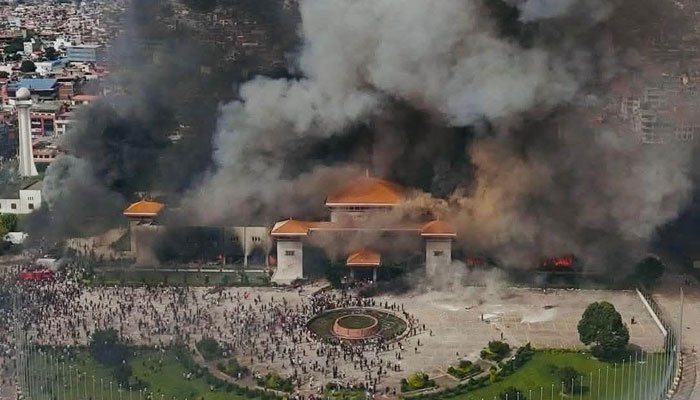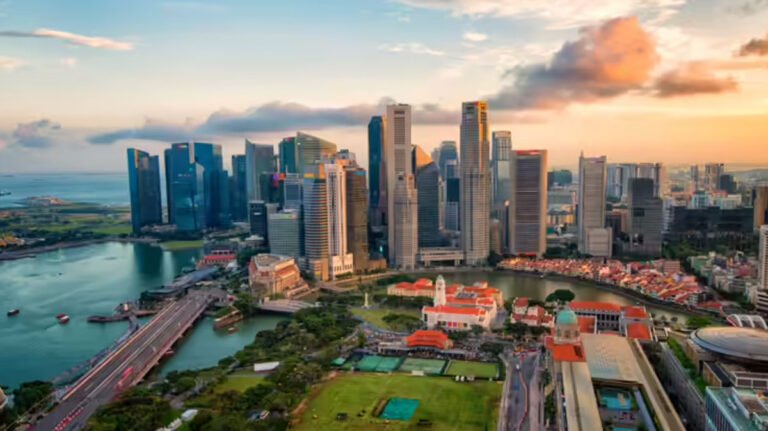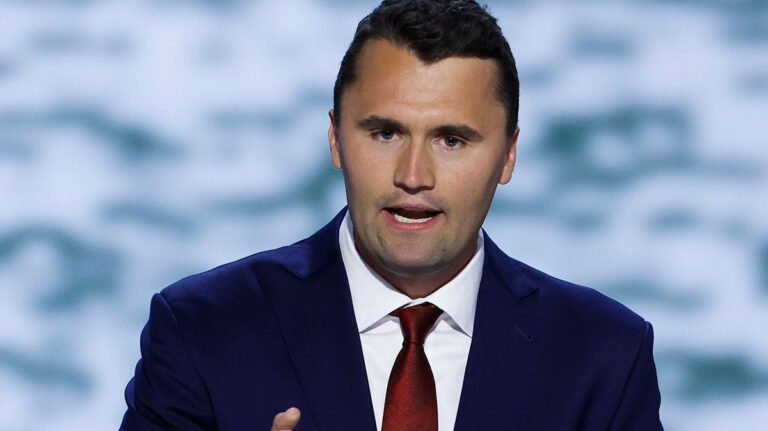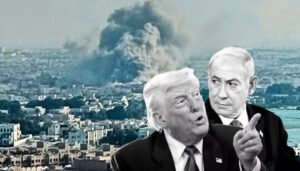Nepal Deploys Army to Guard Parliament After Deadly Anti-Graft Protests. Nepal descended into political and social turmoil on Wednesday as soldiers guarded the national parliament and a strict curfew emptied the streets of Kathmandu. Days of violent anti-corruption protests forced Prime Minister KP Sharma Oli to resign. At least 19 people have died so far.
The government imposed an indefinite curfew after violent clashes erupted across the capital. Thousands took to the streets, angry over widespread corruption and a lack of economic opportunity. Most protesters were young, reflecting deep frustrations with the government’s performance.
Parliament Burned in Escalating Violence
In less than 48 hours Gen Z protest in Nepal did the following:
– Burnt down multiple politicians’ houses
– Increased the protest even during curfew and firing around multiple cities
– made the Prime Minister resign
– entered parliament and burnt it.This is the generation that… pic.twitter.com/ovY2tWAASY
— CG (@chandangoopta) September 9, 2025
On Tuesday, protesters set fire to several government buildings — including the national parliament. Flames tore through the main hall as army firefighters worked overnight to control the blaze. The building’s exterior remained blackened and charred by Wednesday morning.
Burned vehicles and mangled debris filled the roads near key government offices. Among the dead was Rajyalaxmi Chitrakar, the wife of former Prime Minister Jhalanath Khanal. Protesters reportedly set her home on fire during the riots.
Army Deployed as Civil Unrest Grows
With police unable to control the violence, the Nepal Army moved in to restore order. Army spokesperson Raja Ram Basnet said the military’s top priority is to “protect life and property” and “bring the situation under control.”
Armoured vehicles now patrol the streets. Shops are closed. Commercial activity has halted across the city. Kathmandu’s international airport was shut until 6 p.m., delaying many domestic and international flights.
What Sparked the Protests?
Nepal govt was getting exposed for corruption, so they banned social media apps. But with almost 14 million young people, they can’t ignore Gen Z. This generation won’t stay silent.
pic.twitter.com/Ic0QHuMGMa— sangwan (@SangwanHQ) September 8, 2025
The unrest began after the government briefly banned social media platforms last week. Though the ban was lifted, it triggered a wave of anger. Tensions quickly escalated after police fired rubber bullets and tear gas at demonstrators on Monday, leading to the first deaths.
The protests reflect long-standing issues: corruption, political gridlock, and unemployment. Millions of Nepalis have left the country in recent years, seeking work abroad — especially in the Gulf, Malaysia, and South Korea — due to the lack of jobs at home.
Push for Talks & Fresh Elections
Authorities are now exploring ways to defuse the crisis. The army confirmed that prohibitory orders would stay in place until Thursday morning. Officials are also working to initiate dialogue with protest leaders.
Former Supreme Court judge Balaram KC urged protesters to form a negotiation team. He also called for a caretaker government and fresh national elections.
“Parliament should be dissolved,” KC told Reuters. “We need new elections to restore public trust.”
India Calls for Calm
India is closely watching developments in Nepal. On Tuesday night, Prime Minister Narendra Modi posted on X (formerly Twitter):
“Nepal’s stability, peace, and prosperity are of utmost importance. I humbly appeal to all my brothers and sisters in Nepal to maintain peace and order.”
Nepal has struggled with political instability since it abolished its monarchy in 2008. Sandwiched between India and China, the country remains geopolitically sensitive and economically fragile.
As of now, the curfew in Kathmandu remains in effect. Nepal’s next political chapter is yet to unfold.
Media House Torched
That’s the largest media house in #Nepal in flames, because the protesters say they never spoke about the youth, never cared to speak for the future of the youth.
— Tamal Saha (@Tamal0401) September 9, 2025
One of Nepal’s largest media houses was set ablaze by protesters who accused it of ignoring the voices and struggles of the country’s youth. Demonstrators said the outlet failed to cover their demands or highlight the growing frustration over unemployment and corruption—issues at the heart of the ongoing unrest.








From Kathmandu’s streets to digital platforms, the new generation is proving that they are fearless, bold, and ready to fight for their future. They are tired of corruption, unemployment, and broken promises. This movement is not just a protest; it’s a wake-up call for those in power.#NepalProtests #GenZForChange #NepalYouth #StandWithNepal #VoicesOfGenZ #FutureIsNow